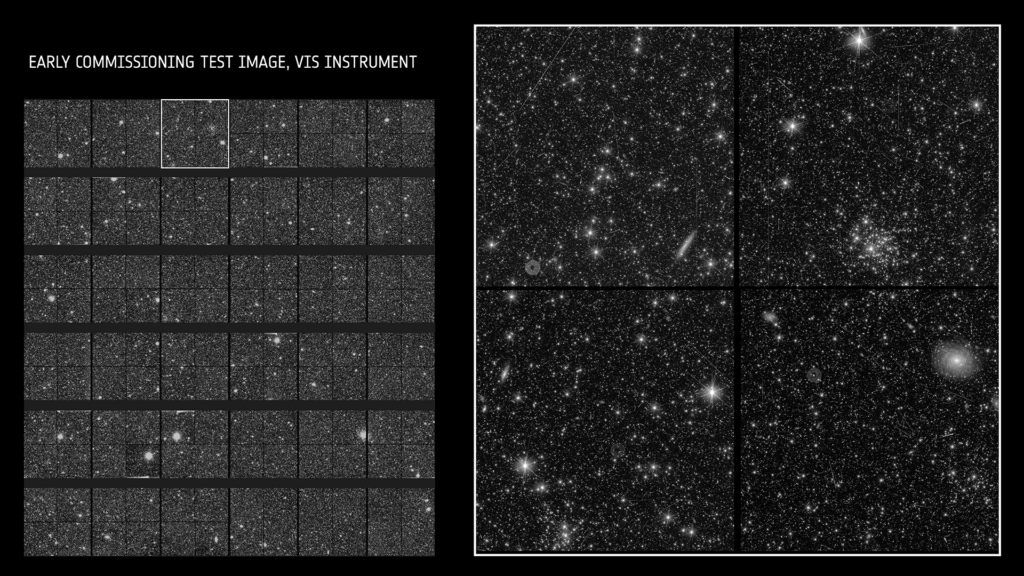ESA’s Euclid mission is designed to explore the composition and evolution of the dark Universe. The space telescope will create a great map of the large-scale structure of the Universe across space and time by observing billions of galaxies out to 10 billion light-years, across more than a third of the sky. Euclid will explore how the Universe has expanded and how structure has formed over cosmic history, revealing more about the role of gravity and the nature of dark energy and dark matter.
Euclid has two instruments: the VISible instrument (VIS) to observe the visible light and also the Near-Infrared Spectrometer and Photometer (NISP) to take images in the near-infrared light. Euclid’s two instruments have captured their very first test images. The mesmerising results indicate that the space telescope will achieve the scientific goals that it has been designed for – and possibly much more.
In particular, the Euclid’s VISible instrument (VIS) will image the sky in visible light (550–900 nm) to take sharp images of billions of galaxies and measure their shapes. The first image (below) on the left shows the full VIS field of view, with the zoom-in on the right (showing one detector split into four quadrants) demonstrating the extraordinary level of detail that VIS is already achieving. We see spiral and elliptical galaxies, nearby and distant stars, star clusters, and much more. But the area of sky that this zoom-in covers is actually only about a quarter of the width and height of the full Moon.
Euclid’s telescope collected light for 566 seconds to enable VIS to create this image.

Euclid’s Near-Infrared Spectrometer and Photometer (NISP) instrument is dedicated to measuring the amount of light that galaxies emit at each wavelength. It will image the sky in infrared light (900–2000 nm) to measure the brightness and intensity of light. The image below was taken during commissioning of Euclid to check that the focused instrument worked as expected. This is a raw image taken using NISP’s ‘Y’ filter.
The image on the left shows the full NISP field of view, with the zoom-in on the right (4% of NISP’s full field of view) demonstrating the extraordinary level of detail that NISP is already achieving. We see spiral and elliptical galaxies, nearby and distant stars, star clusters, and much more. But the area of sky that it covers is actually only about a quarter of the width and height of the full Moon.
Euclid’s telescope collected light for 100 seconds to enable NISP to create this image. During nominal operation, it is expected to collect light for roughly five times longer, unveiling many more distant galaxies. Before it reaches the detector, NISP sends incoming light through either a photometry filter or a spectrometry grism. In this image, the light from Euclid’s telescope has passed through the photometry filter.

The above images are largely unprocessed, some unwanted artefacts remain – for example the cosmic rays that shoot straight across. The Euclid Consortium will ultimately turn the longer-exposed survey observations into science-ready images that are artefact-free, more detailed, and razor sharp.
Over the next few months, ESA and industry colleagues will continue to carry out all the tests and checks needed to ensure that Euclid is working as well as possible. At the end of this ‘commissioning and performance verification phase’, the real science begins. At that point ESA will release a new set of images to demonstrate what the mission is capable of.
Source: ESA
